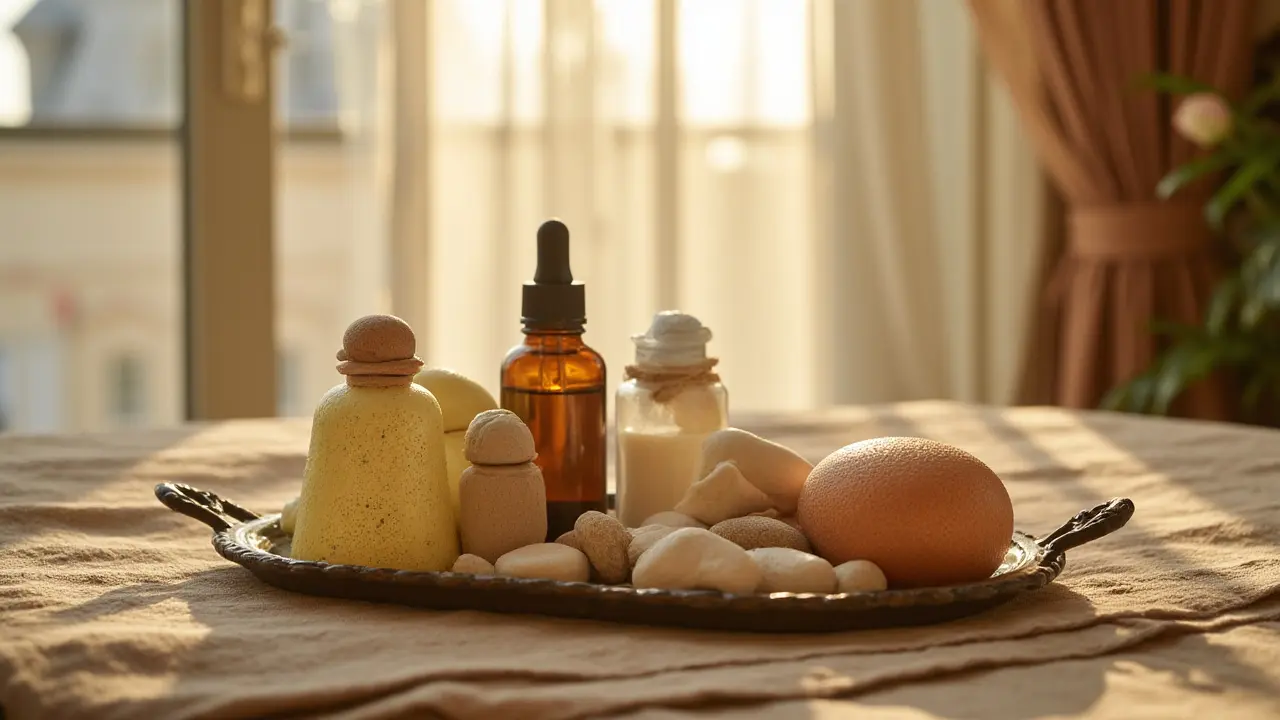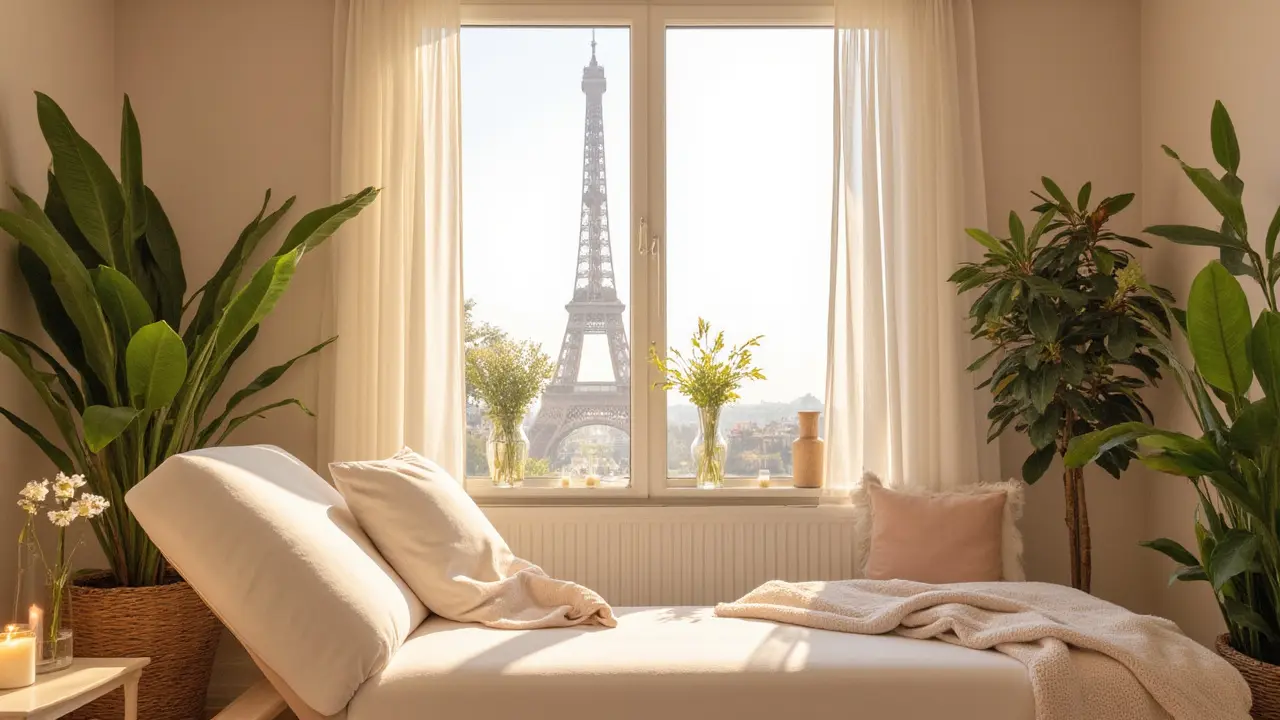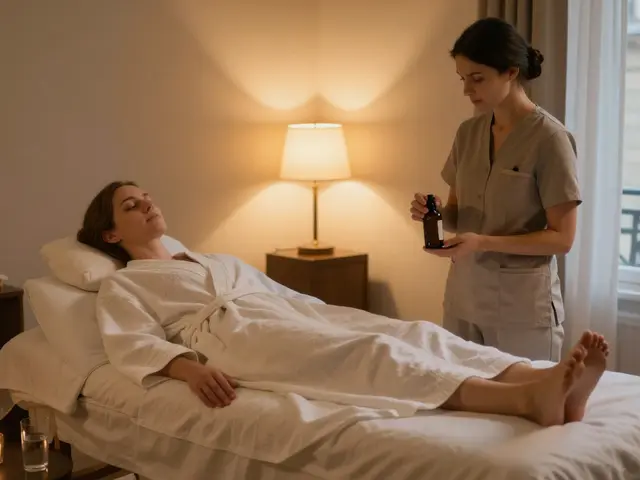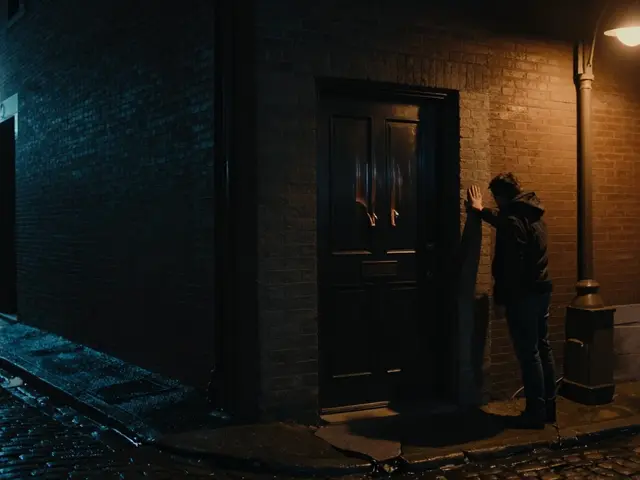Close your eyes for a second and picture that tense knot in your neck just melting away. The truth is, most of us are walking around with shoulders up to our ears, jaws clenched, backs hunched over little screens—constantly carrying way more tension than we should. Studies from the Fédération Française de Massage Bien-Être show that about 70% of adults in Paris alone say they feel regular physical stress. That sounds wild, but it probably doesn’t surprise you. That’s where the whole world of body massage steps in. Not the stuffy, overpriced hotel massage, but the real, deeply satisfying touch that makes you glide out of a spa or salon feeling brand-new. Let’s get right into what makes body massage so much more than luxurious pampering—and why you should absolutely make it a part of your routine.
Why Paris Loves Body Massage: Science, History, and Popularity
Paris doesn’t just get body massage right—they make it an art. The city has embraced massage culture hard, from boutique spas in Le Marais to simple neighborhood studios hidden behind classic blue doors. But why is body massage such a universal favorite? It’s not just tradition or trend; it’s got deep scientific roots. Studies published in the European Journal of Integrative Medicine confirm that regular massage reduces cortisol (the infamous "stress hormone") by up to 31%. And, researchers have identified that massage increases serotonin and dopamine, those wonderful brain chemicals that leave you feeling calm, happy, maybe even a bit dreamy.
But body massage isn’t new for the French. Back in the 19th century, Paris was already a city of wellness, with hydrotherapy and massage treatments popping up around famous bathhouses. Even now, you’ll find traces of this spa heritage in modern Parisian salons. A quick stat from the Institut National de la Statistique et des Études Économiques: in 2024, Paris had over 1,600 venues offering professional massage—that’s more than one for every square kilometer inside the city limits. You’re never far from a skilled pair of hands.
But it’s not just about relaxation. Massage is woven into Parisian routines for everything from injury recovery (think: marathon runners recovering after the Schneider Electric Marathon de Paris) to supporting mental health and even boosting immune systems. It’s common for locals to book massages ahead of stressful events, or simply as a treat after a rough week. That’s a far cry from the stereotype that massage is only for the bougie or indulgent. In Paris, it’s a way of hitting reset for the mind and body—just as essential as their morning espresso.
Types of Body Massage You’ll Find in Paris
Whether you’re looking for a quick fix after a tough workout or want a slow, head-to-toe experience, Paris has it all. Let’s break down a few types you’ll come across again and again:
- Swedish Massage: Probably the most recognized option, known for relaxing long strokes and gentle kneading. Perfect if you want classic relaxation without too much intensity.
- Deep Tissue Massage: This is for the brave. Therapists work into deeper muscle layers, breaking up knots and stubborn tension. If you do a lot of heavy lifting (or just sit at a desk all day), deep tissue can be a game-changer.
- Shiatsu: Originating from Japan but widely popular in Paris, shiatsu uses finger, palm, and thumb pressure on specific energy points. It can feel like acupuncture without the needles—great for balancing body energy and relieving chronic pain.
- Hot Stone Massage: Smooth, heated volcanic stones glide along your muscles, boosting blood flow and melting away tension. Especially lovely during cold Paris winters.
- Thai Massage: Often performed on a mat with you fully clothed, this massage involves stretches, pressure, and even gentle yoga-like movements. If you want something active and feel like you need to loosen up, this is it.
- Lymphatic Drainage Massage: A lighter-touch technique focusing on the lymphatic system, it helps detox and de-puff after late nights or heavy meals—Parisians swear by it during party season.
Curious about prices? Here’s a quick table to show what you can expect to pay in Paris this year, based on data from popular booking sites:
| Massage Type | Average Duration | Average Price (€) |
|---|---|---|
| Swedish | 60 min | 80 |
| Deep Tissue | 60 min | 95 |
| Shiatsu | 60 min | 90 |
| Hot Stone | 60 min | 110 |
| Thai | 60 min | 85 |
| Lymphatic Drainage | 60 min | 100 |
Of course, rates jump for luxe hotel spas or drop at smaller local spots. But even simple studios deliver incredible skill—you don’t always have to splurge for a great experience in Paris.

How to Get the Most Out of Your Body Massage
Lots of people book a body massage and just show up hoping for magic. Trust me, there are some smart rituals and little preps that can seriously upgrade your experience. First, don’t rush in. Arrive early so you can actually unwind—nothing kills relaxation faster than sprinting into your appointment frazzled. Many Parisian spas serve herbal tea in a calm lounge pre-treatment; sip slowly, get your mind in the right space.
Next, think about what you actually need. Tension in your shoulders? Aching lower back? Or do you want an all-over reset? Most therapists appreciate it when you’re as specific as possible. Use plain language: "My neck feels like stone," or "I’ve got soreness along my spine from sleeping weird." The more clear and honest you are, the better they can tailor the massage.
A note on modesty: French spas can sometimes have a more relaxed approach to draping than you might be used to, but don’t be shy—ask for what makes you comfortable. A professional will always respect your boundaries. If you’re new to massage or have health issues (like high blood pressure, allergies, or pregnancy), let your therapist know in advance so they can adjust pressure, oils, or positions safely.
This might sound boring, but drink water before and after. Massage gets your blood moving and helps flush out waste products from muscles—if you’re dehydrated, you might feel a bit sluggish after. Some people feel a bit emotional after a deep massage; that’s totally normal. When your body lets go of tension, sometimes emotions come along for the ride.
Want to make your massage benefits last? Try these pro tips after your session:
- Avoid alcohol or heavy meals right away—give your body time to process and reset.
- Take a gentle walk outside if you can; it helps circulation keep flowing.
- Use a warm shower or bath that evening. It keeps muscles loose and continues the relaxation effect.
- Jot down anything you felt (big tension release, emotions, even new aches) so you can flag goals for next time.
Book regularly, not just as a one-off treat. Studies published by the International Journal of Preventive Medicine show significant improvements in anxiety and depression with weekly or bi-weekly sessions compared to "whenever I remember." But honestly, even one solid massage can turn around a rotten week.
DIY Massage Tips and Knowing When to Call a Pro
Let’s be real—not everyone has time (or budget) to visit a massage studio every week. The good news? You can do a lot at home, and sometimes those quick daily rituals keep tension from piling up. The golden rule: listen to your body and be gentle. Here's what you can try at home for basic relief:
- Self-Massage for Neck & Shoulders: Use the pads of your fingers, making small circles from the base of your skull down to your shoulders. Gradually increase pressure, pausing when you hit tight spots.
- Foam Roller or Massage Ball: A tennis ball pressed between your back and a wall can loosen muscle knots. Focus on slow, gentle motion along your upper and lower back.
- Hand Massage for Tech Hands: Stretch your fingers wide, then use your opposite thumb to knead your palm and the base of your thumb—perfect after a day of non-stop texting.
- Warm Compress: Ten minutes of a warm (not too hot) towel laid over tense areas can start to soften muscles before or after self-massage.
Don't forget that breath work adds big benefits. Taking slow, deep breaths during self-massage triggers your body's relax response and makes everything way more effective.
Of course, sometimes home care just isn’t enough. If you notice pain that keeps getting worse, numbness, tingling, or shooting pains, it's time to skip the DIY and call in a pro. French health guidelines recommend seeing a certified massage therapist or a medical professional if your pain started after an accident, comes with swelling, or is mixed with fever or unexplained fatigue.
For anyone living in or visiting Paris, keep an eye out for therapists with the FFMBE (Fédération Française de Massage Bien-Être) certification—it’s a sign they’ve had rigorous training. Most reputable salons also keep their hygiene and safety standards high, especially after the lessons of recent years. Clean linens, fresh-smelling rooms, and therapists who wash hands before and after: these are minimum must-haves for any professional experience.
Massage is supposed to be about TLC, not pain or awkwardness, so don’t be shy about voicing concerns. Pros want you to leave feeling better than you arrived. And if you land a therapist or spa that totally clicks with you? Go back and become a regular. They’ll learn your body and your preferences better with every visit; pretty soon, you’ll get custom treatments that hit every sore spot without even needing to say a word. That’s the best part: building a relationship with someone who makes your body feel incredible is the ultimate luxury—one you actually deserve.






